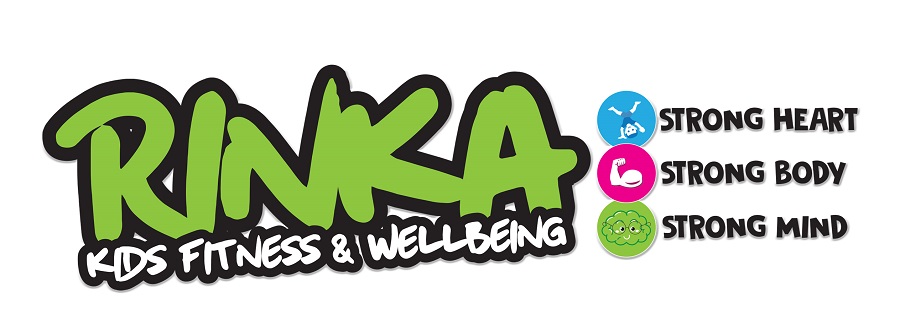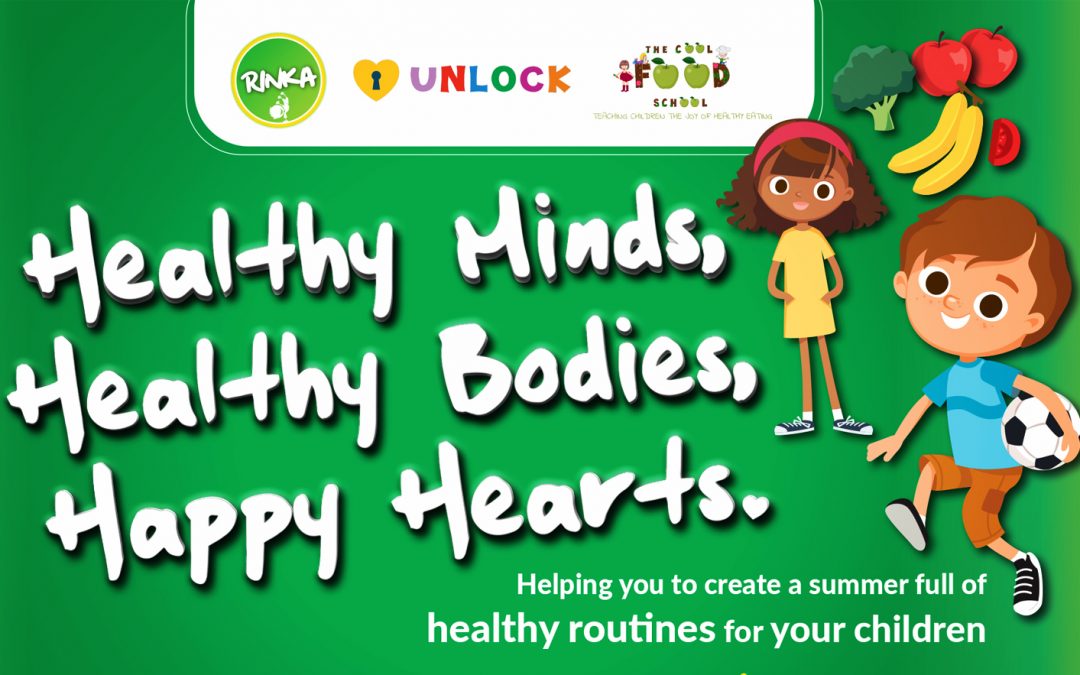All parents want healthy happy kids and they are continually being told how important it is to bring up their children in a healthy environment, to make sure their kids are active, eat well and are in good shape emotionally.
How often are parents offered the tools to help them do this? Not often.
That’s why RINKA has teamed up with experts Deirdre Doyle from The Cool Food School and Deirdre Ward from Unlock to create ‘The Three Pillars’. The Three Pillars cover ways to create healthy habits for your family with access to an abundance of advice, tips and resources to support you on your journey!
What are The Three Pillars?
💚 Fitness and Activity!
💚 Healthy Food!
💚 Emotional Wellbeing!
Let’s have a look at each Pillar in more detail.
Fitness & Activity
WHO has identified that only 20% of children are getting the daily minimum activity requirement. We know that children need a minimum of 60 minutes of moderate to vigorous physical activity a day. Kids being active on a regular basis is important for their heart health, muscle development, bone development, and fundamental skills and confidence in movement.
Making changes and creating new habits is guaranteed to come with obstacles. What if I have a child who is reluctant to take part in sport? My child is not competitive, or my kids don’t associate movement with fun. Instill confidence in your kids at a young age, let them find their own interests, and most importantly show them that fitness can be fun! Parents need to be good role models and the driving force!
🏃🏻♀️ Fitness and Activity Tips
- Don’t push your child to participate in competitive sports…there are many other ways to get 60 mins of activity in and it doesn’t have to be all in one go! It could be a 10 minute walk in the morning, chasing bubbles in the afternoon and a dance off while prepping dinner!
- Switch the focus from being the best to feeling the best
- Praise your children…it matters if they are trying!
- Build confidence in fundamental movement skills such as hopping, skipping, running, jumping – mastering these skills will really benefit your little ones!
- Make being active family focused and a normal part of the day’s routine, join in and make it fun!
- Don’t use exercise as punishment!
- Lead by example – children love to do what you do so show them how
- Come up with a plan on how to limit screen time – make it realistic & stick to it!
- Get outside when you can! Take a neighbourhood walk, go for a bike ride, walk to the shop instead of driving, do a scavenger hunt!
- When the weather is bad get active indoors – burn some energy by playing Musical Statues or Simon Says, set up a simple obstacle course or practice our RINKA animal walks!
Healthy Food
With childhood obesity an unresolved issue we can’t ignore the serious long-term health implications – high blood pressure, diabetes, poor sleeping habits, poor self image, lack of self-confidence. It is important to be able to recognize when your child is overweight. If you are buying clothes that are “older” than your child’s age, or find their energy and ability to participate in activity is difficult, if food portions are increasing then you need to be able to stop and look at ways in which your habits and lifestyle may be affecting your child’s health.
Instilling healthy eating habits in our children can be difficult as we find ourselves busier than ever, often with both parents juggling jobs and home life. It can be frustrating when our kids are wowed by the colourful characters on cereal boxes and sweet treats, too young to understand these foods have a high sugar and fat content. All too often we hear parents say things like, my child only eats chicken nuggets, or my child hates vegetables. Why not change this dialogue to my child loves carrots – even if that is the only veg they like to eat! Focus on the positive not the negative and change your own perspective to a positive way of talking about food. We have put together some great tips for you from Deirdre Doyle @thecoolfoodschool
🥦 Healthy Food Tips
- Make food fun for kids so they will want to eat healthy foods, talk more about foods that help make us strong and healthy rather than the foods that are ‘bad’
- Set regular snack times that consist of fruit, veg and protein
- Involve kids in creating a shopping list and bring them along to the supermarket – give them choices between healthy foods, ‘will we buy broccoli or cauliflower?’
- Get the kids involved in food prep and cooking! It can be simple tasks like washing veg – The Cool Food School has lots of Kid Safe kitchen tools available on their website
- Grow food in your garden! Kids love this and they get to see their food grow from seeds and understand where their food comes from – tomatoes and herbs are great ways to start
- Did you know most kids need to be exposed to new foods anything from 7 to 20 times before they will try it or like it! We have all heard the saying ‘it’s an acquired taste’ so offer your children a variety of fruits and veg – if they don’t eat it just offer it again (and again!) rather than make an issue of it.
- Expose your kids to food – let them see it, touch it and get to know the smell, taste and teach them about how it benefits us. The more familiar a food the less a child will reject it!
- Get a portioned plate – half fruit and veg, quarter grains and quarter protein
- Remember it’s ok if a child doesn’t like a certain food – don’t force a child to eat but instead encourage them and be ready to offer a healthy alternative.
As with fitness and activity it is important to lead by example when it comes to encouraging your children to enjoy healthy meals and foods. If you don’t want your children to eat unhealthy foods and snacks like crisps, chocolate or chicken nuggets simply don’t buy them! An occasional treat is no harm – remember it’s all about helping kids create a healthy relationship with food.
Emotional Wellbeing
Perhaps this is a topic you are only recently hearing more about, however your child’s emotional wellbeing is an important part of our Three Pillars and has always been an important part of childhood. A study by Barnado’s has shown that at least one-third of children have experienced an increase in mental health issues during the crisis (covid)
The many changes to our children’s lives since the pandemic on top of the regular challenges they face is bound to add to their emotional stress.
Deirdre Ward from UNLOCK has introduced us to the Five C’s to help us navigate our way to supporting our children’s emotional wellbeing.
🥰 Emotional Wellbeing – The 4 C’s
- Communication
Slow down and take the time to communicate with your child, reflect rather than be an expert – use language like ‘it seems like you are angry’ This will give them the space to identify what they are feeling, this way you are helping them understand and be aware of their emotions.
2. Connection
Make a connection so your children feel heard – be mindful not to multitask while listening to what they have to say. Give them time and make them feel understood and that you can relate to them.
3. Contain
Help your child to understand their emotions, validate their feelings and help them deal with it – show them ways they can channel or contain their emotions without making them feel they can’t express themselves – make sure they understand they are not alone
4. Control
Allow your children choices within boundaries, for example let them choose between two healthy options such as ‘beans or broccoli’ Give them responsibility and a sense of independence by allowing them to make the decision. Do let them know their limits and let them share their opinions
Emotional health is JUST as important as physical health. Try practicing these within your household to help foster an emotional wellbeing in the family.
It is clear that each of The Three Pillars play an important role in supporting the structure of a well balanced child, physically, nutritionally and emotionally. Healthy Happy Kids is the goal!

